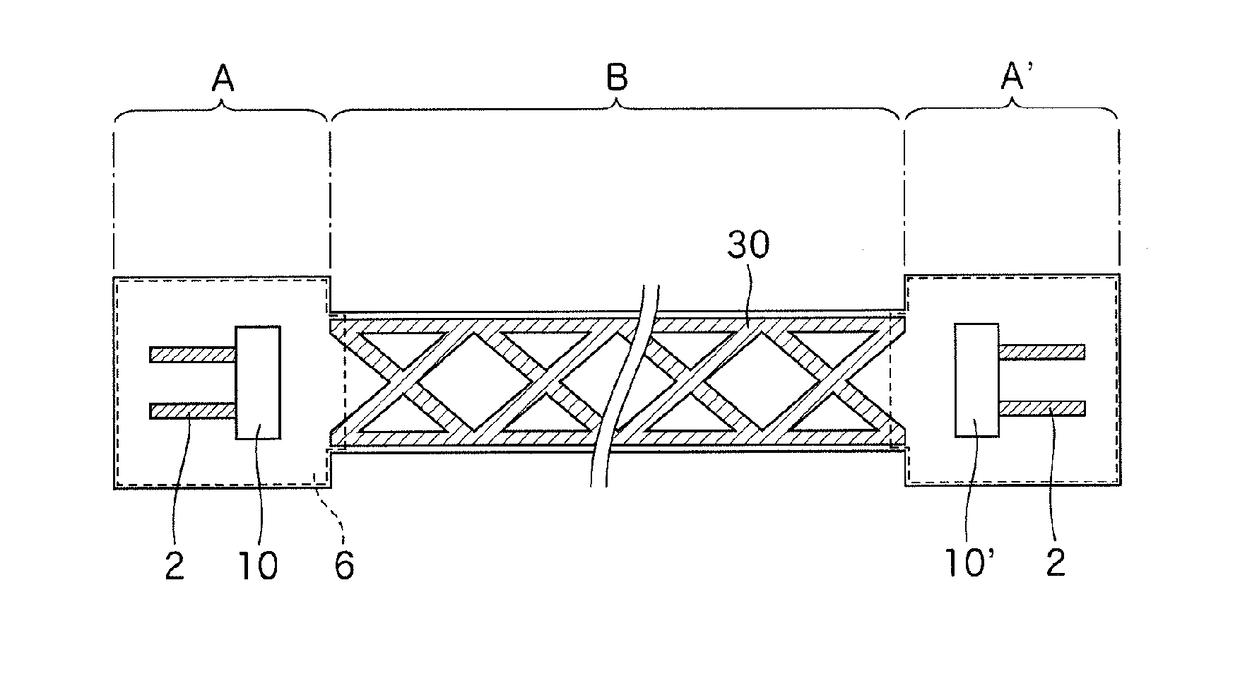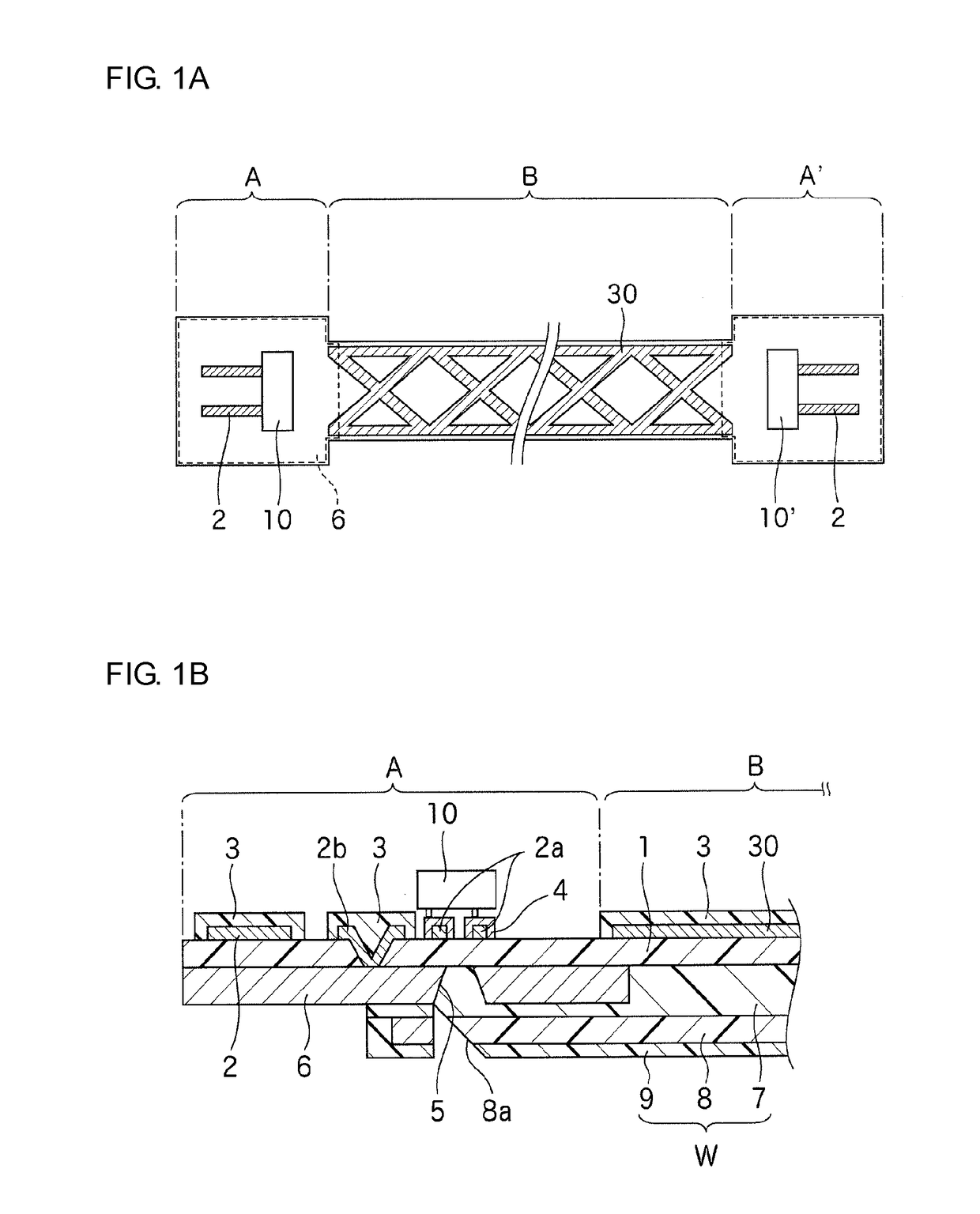Opto-electric hybrid board, and production method therefor
a hybrid board and opto-electric technology, applied in the direction of conductive pattern formation, printed circuit non-printed electric components association, instruments, etc., can solve the problems of liable light transmission loss of the flexible optical waveguide w other than the boundary, liable to break or fold at the boundary, etc., to achieve easy provision of inventive opto-electric hybrid boards, reduce the light transmission loss of the resulting optical waveguide, and avoid unnecessary steps
- Summary
- Abstract
- Description
- Claims
- Application Information
AI Technical Summary
Benefits of technology
Problems solved by technology
Method used
Image
Examples
example 1
[0068]The opto-electric hybrid board shown in FIGS. 1A and 1B was produced in the aforementioned manner. The interconnection portion B had a length of 20 cm. A 20-μm thick stainless steel layer was provided as the metal reinforcement layer. The insulation layer had a thickness of 5 μm, and the under-cladding layer had a thickness of 10 μm (as measured from the back surface of the insulation layer). The core had a thickness of 50 μm and a width of 50 μm. The over-cladding layer had a thickness of 70 μm (as measured from the front surface of the under-cladding layer). The first electric wiring and the electrically conductive dummy pattern had a thickness of 5 μm. The electrically conductive dummy pattern had an oblique lattice shape, and covered the insulation layer at a surface coverage percentage of 44%. The electrically conductive dummy pattern had edge portions respectively extending continuously along the opposite longitudinal edges of the interconnection portion and each having ...
example 2
[0069]An opto-electric hybrid board having substantially the same basic construction as in Example 1, except that electrically conductive dummy patterns were formed in an arrangement as shown in FIG. 7 and no second electric wiring was formed. The electrically conductive dummy patterns covered the surface of the insulation layer at a surface coverage percentage of 40%. Longitudinal edge portions of the electrically conductive dummy patterns respectively extending continuously along the opposite longitudinal edges of the insulation layer each had a width (indicated by a reference character Q′ in FIG. 7) of 400 μm.
PUM
 Login to View More
Login to View More Abstract
Description
Claims
Application Information
 Login to View More
Login to View More - R&D
- Intellectual Property
- Life Sciences
- Materials
- Tech Scout
- Unparalleled Data Quality
- Higher Quality Content
- 60% Fewer Hallucinations
Browse by: Latest US Patents, China's latest patents, Technical Efficacy Thesaurus, Application Domain, Technology Topic, Popular Technical Reports.
© 2025 PatSnap. All rights reserved.Legal|Privacy policy|Modern Slavery Act Transparency Statement|Sitemap|About US| Contact US: help@patsnap.com



